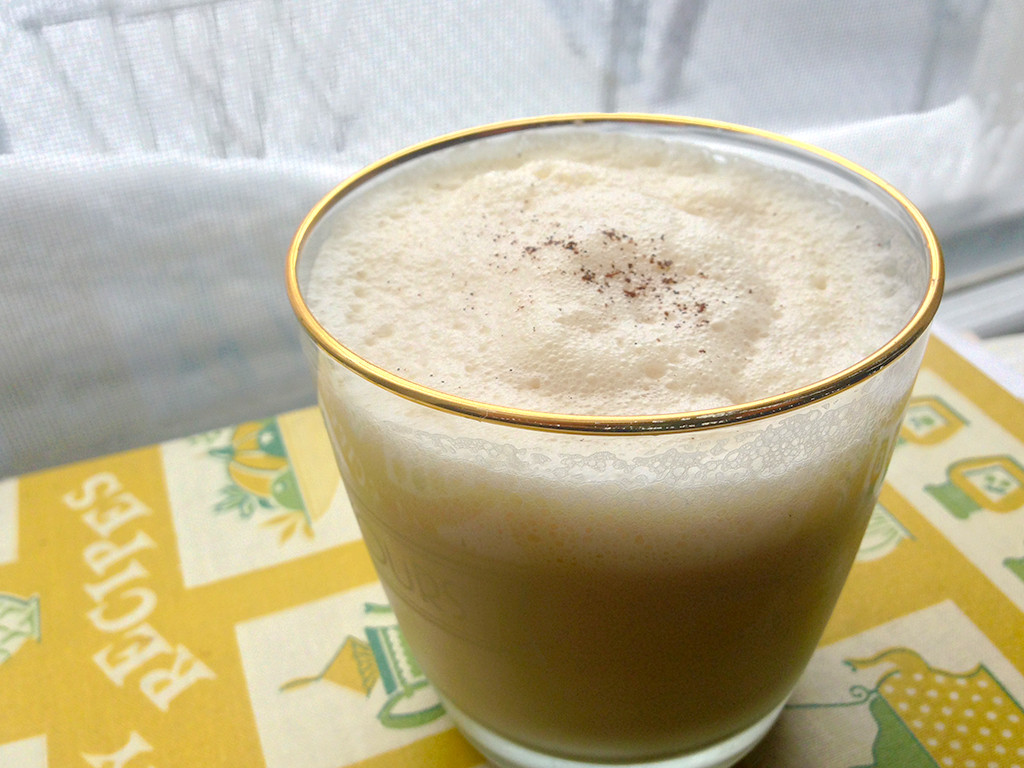 Moose Milk: A drink for a blizzard.
Moose Milk: A drink for a blizzard.
If you live anywhere in the Northeast (or those other places that always get snow and don’t freak out) you probably have a lot of snow outside right now. So here’s what you can do with it: make a magical boozey punch that you chill in a snow drift.
The History.
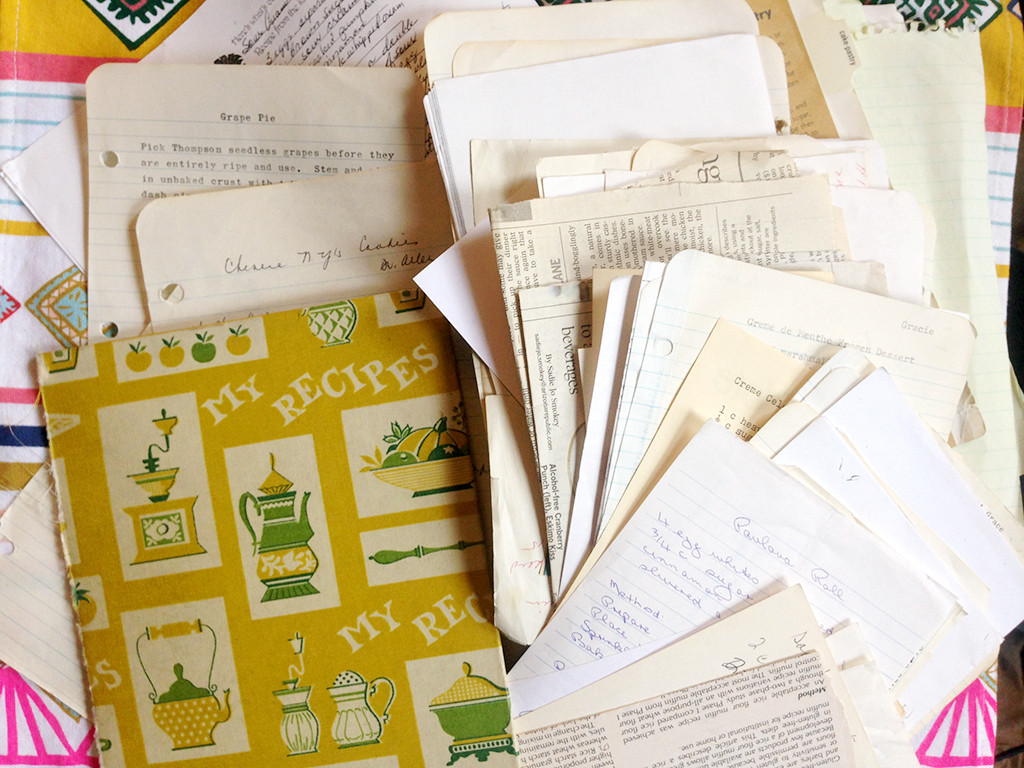 A recipe collection dating from 1966-1998.
A recipe collection dating from 1966-1998.
Every now and again, a reader will send me something. A little book, or recipe, or what-have-you they’ve stumbled upon. Reader Bonnie Belza sent me a binder of vintage recipes picked up at an estate sale in Arizona, stuffed with handwritten notebook papers and newspaper clippings dating between 1966-1998. The collections’ compiler, Anne, asked friends and family for recipes, and they would sign and date their contribtions: Bette Hartnett’s Southern Pecan Pie, 1970; Mrs. Steven’s Ginger Snaps; Aunt Grace’s Date Nut Loaf. Sometimes, the recipes would come attached to letters and notes, which also went into the recipe binder. The book is not just a collection of desserts, but sampling of Anne’s community.
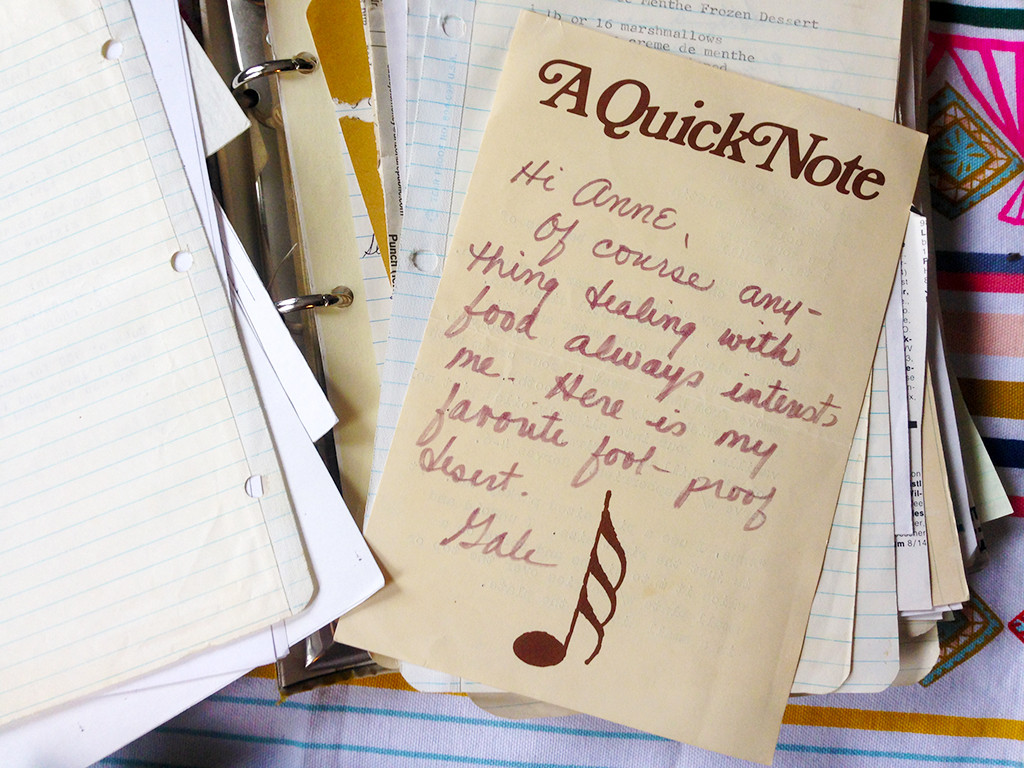 Gale’s fool-proof dessert is Creme Celeste: vanilla, cream and gelatin molded in a “pint sized parkay tub” and served with fruit.
Gale’s fool-proof dessert is Creme Celeste: vanilla, cream and gelatin molded in a “pint sized parkay tub” and served with fruit.
More recent newspaper clippings confirm that Anne lived with her husband Manolo in Arizona, but I suspect they may have retired there from the Midwest. Ethnic treats like kolaches, and dishes of Swedish descent, are also tucked in the book’s pages indicating they may have come from colder climates. And then there’s the recipe for Moosemilk: on a type-written page, in a fancy font (in the era of electric typewrites, you could change the font!), dated only “friday,†a young woman named Lynne writes to Anne and Manolo about her new baby boy, Mark Oliver Mabry: “John loved the Oliver part but everyone thought it was such an odd name that he hated to name him that so we just used it for a middle name.†On the back, she included two recipes for punch, one of them a rum and ice cream concoction called Moose Milk that she instructs to “Cover and refrigerate and leave covered in a snow bank for several hours or overnight.”
Moose Milk is an old term in Canada for hooch: unfiltered moonshine that came out cloudy. The term dates back to the early 1900s (source). But this moosemilk is a sweet, mixed punch and seems similar to the sort of punches that evolved in the 1950s. I can’t find much dependable history as to its origins, but it seems to have some sort of association with the Canadian Airforce.
The Recipe.
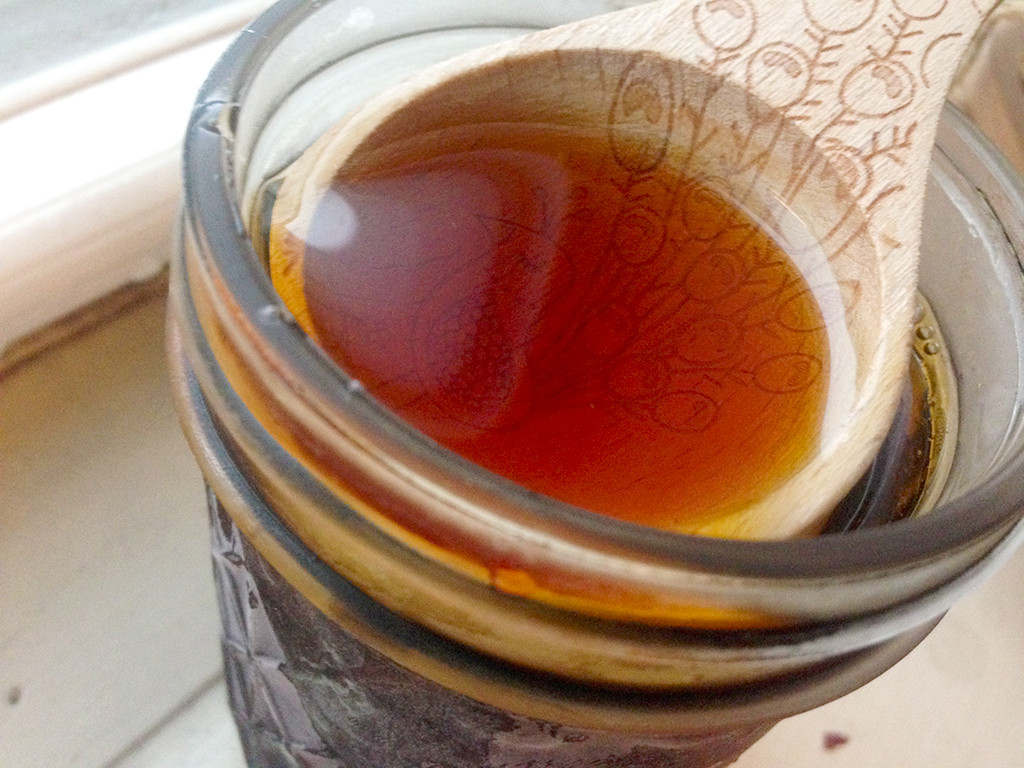 I included some of my parent’s homemade, dark maple syrup.
I included some of my parent’s homemade, dark maple syrup.
Variations of the recipe contain Kahlua (which sounds delicious but I didn’t have any on hand) and maple syrup. I did have a jar of my mother’s homemade dark maple syrup, so I decided to substitute it for the 2-3 tablespoons of confectioners sugar recommended in my recipe.
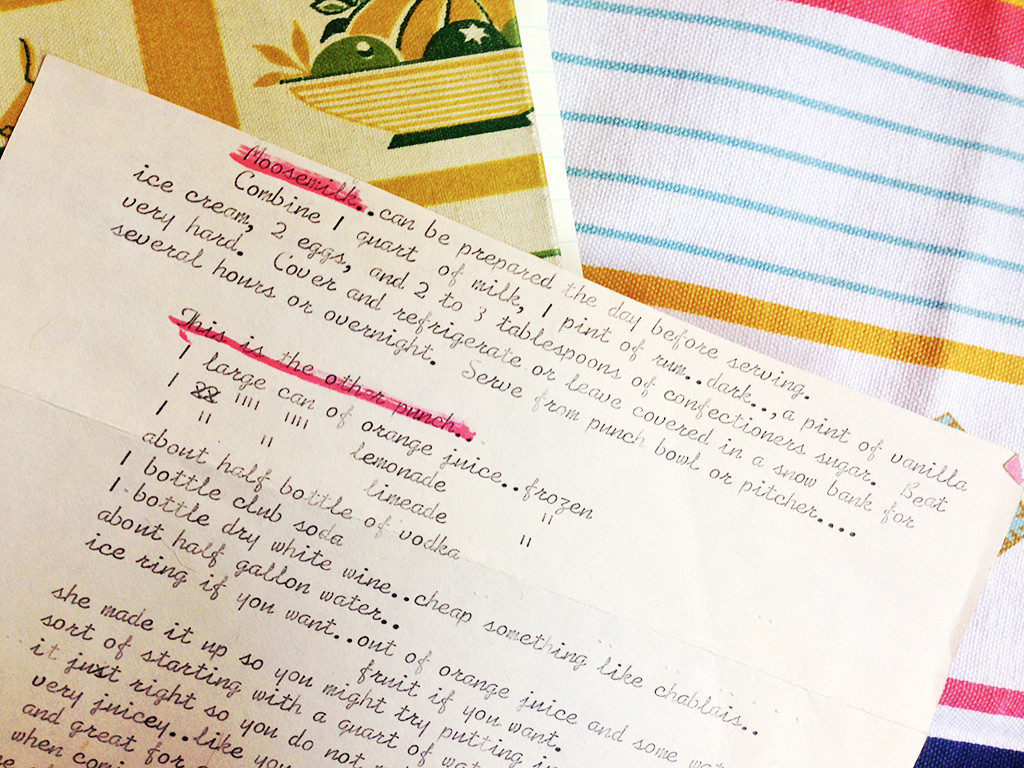 The original recipe for Moosemilk.
The original recipe for Moosemilk.
Moosemilk
Adapted from a typewritten letter, c. 1975
2 eggs, room temperature
2-3 tablespoons confectioners syrup or dark (grade b) maple syrup
1 pint (2 cups) vanilla ice cream, softened (get the good stuff)
1 quart (4 cups) whole milk
1 pint (2 cups) dark rum (I used Black Seal, but Meyer’s would do you just fine.)
- In the bowl of an electric mixer, combine eggs and maple syrup. Gradually increasing speed, beat eggs until frothy, about three minutes.
- Add ice cream. Beat on low until the it looks like ice cream soup; then beat on high until light and airy, about 4 minutes total.
- With mixer on low, add rum and milk. Mix until it looks like watery egg nog.
- Pour into tupperware, mason jars or a bowl, and seal. Bury in a snowdrift for at least three hours, or up to overnight.
Alternately, you could make this recipe in the morning and reveal it in the evening for a party. I made mine in the evening as a massive snowstorm rolled through New York, and nestled it into the snow of my apartment building’s back yard. When the bowl of ice cream and booze was all tucked in, I waved good bye, went inside, and waited for the magic to happen.
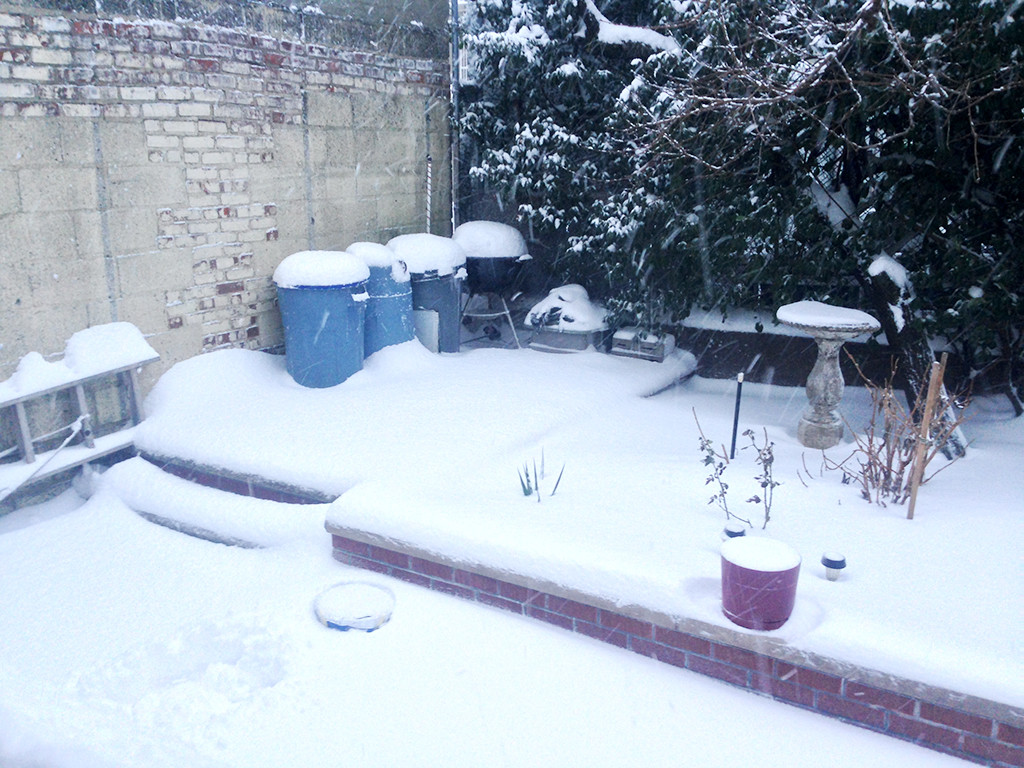 Putting the punch to bed. See the blue circle of the punch bowl on the ground?
Putting the punch to bed. See the blue circle of the punch bowl on the ground?
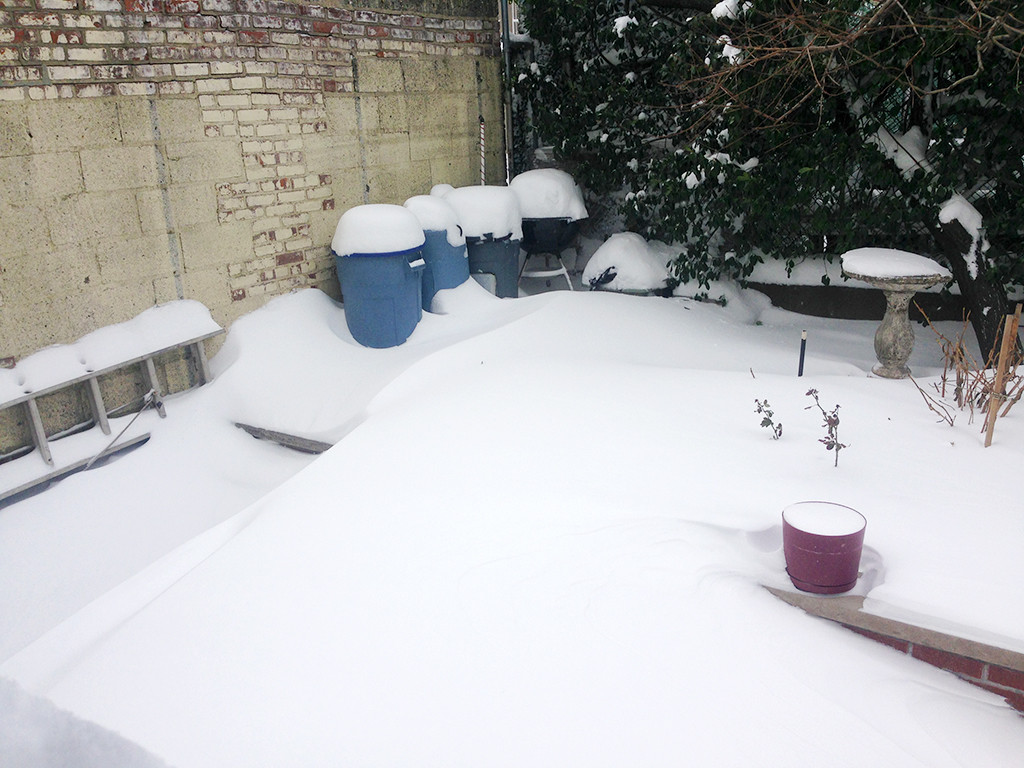 The next morning: Covered in a snow drift!!!
The next morning: Covered in a snow drift!!!
The Results!
In the end, New York City didn’t get as much snow as expected: about a foot in my part of Queens. But somehow, I managed to put the bowl of Moose Milk in the middle of a three foot snow drift. My husband and I dug it out around noon, after it had been in the snow about 18 hours.
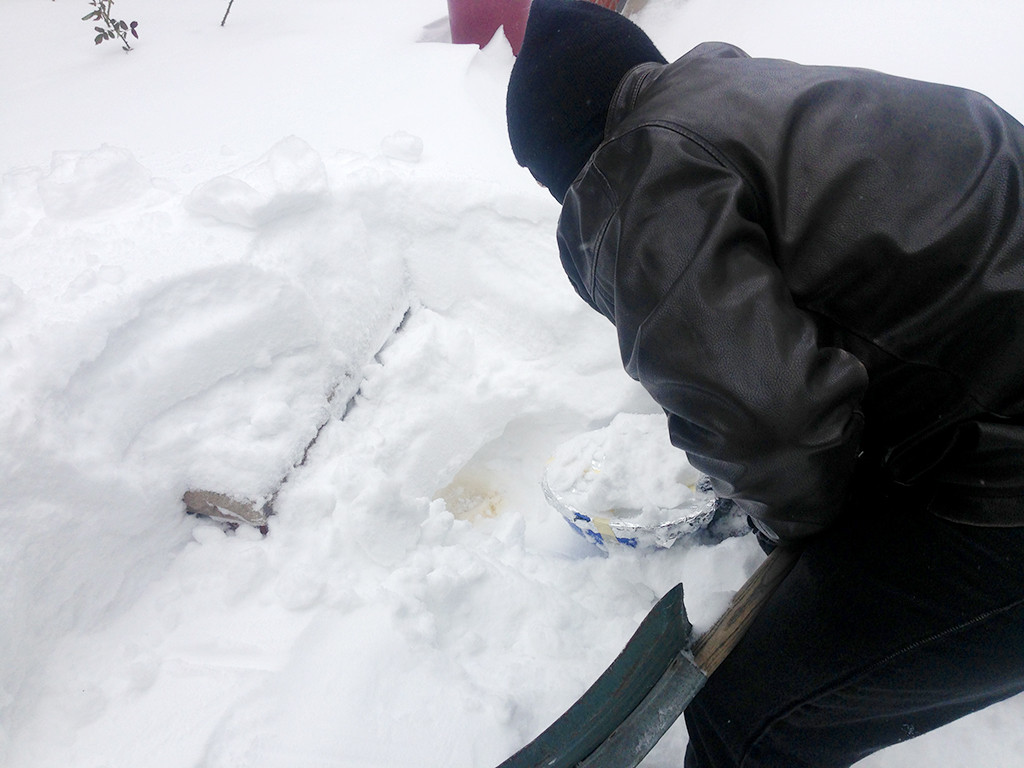 Excavating the punch.
Excavating the punch.
When I brought it in, and scissored through the tin foil covering, I was shocked to find ¾ of the contents missing. My first thought, naturally, was “What kind of sorcery is this!†Upon closer inspection, I found a fairly large, but barely imperceptible crack in the bottom of the bowl. Luckily, there was still enough punch left for several glasses.
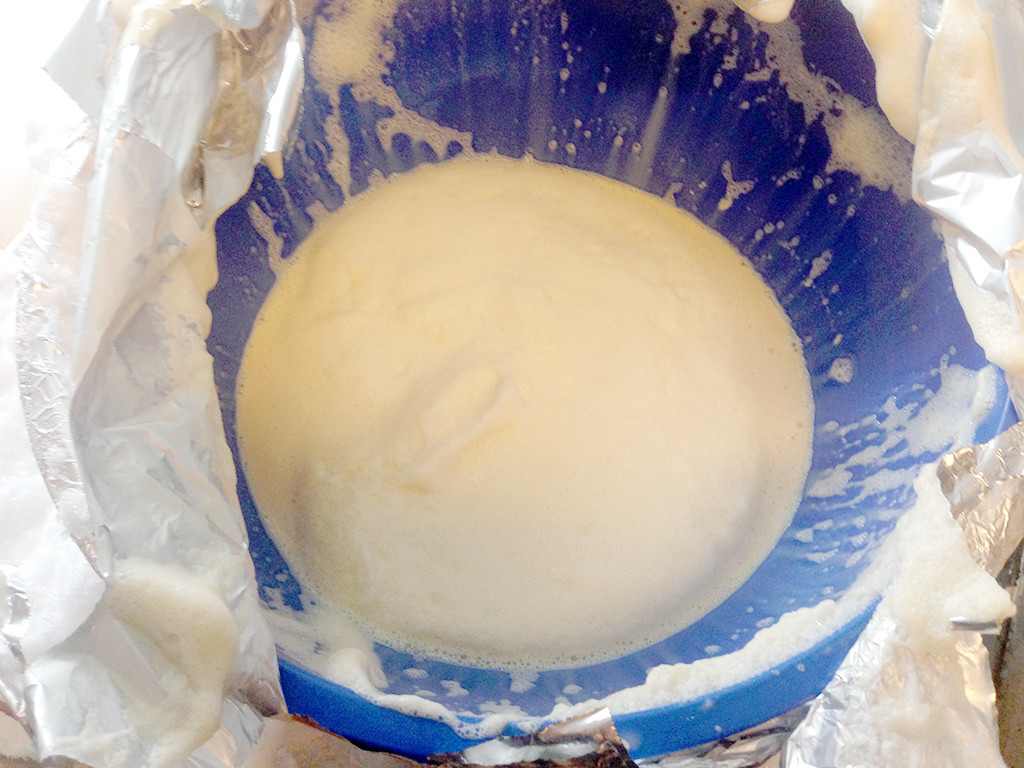 The final punch!
The final punch!
Overnight, the punch had separated: a delightful, creamy froth had risen to the top, ready to be spooned on top of Moose Milks helpings. Most importantly, the drink had mellowed. When I tasted it right after mixing, all I could tasted was the rum. After many hours in the snow, it was still strong, but the bite of the alcohol had relaxed just enough. I garnished each glass with powdered vanilla, which was just the bump this drink needed. (although I got mine from a collegue, here’s something similar ). Creamy, vanilla, goodness.
). Creamy, vanilla, goodness.
Moosemilk! If you’ve got some snow outside, harness the weather to make you a drink, instead of taking up precious refrigerator space. Invite a few neighbors to share it with, or perhaps it’s just for you and your partner, while you binge watch The Wire.
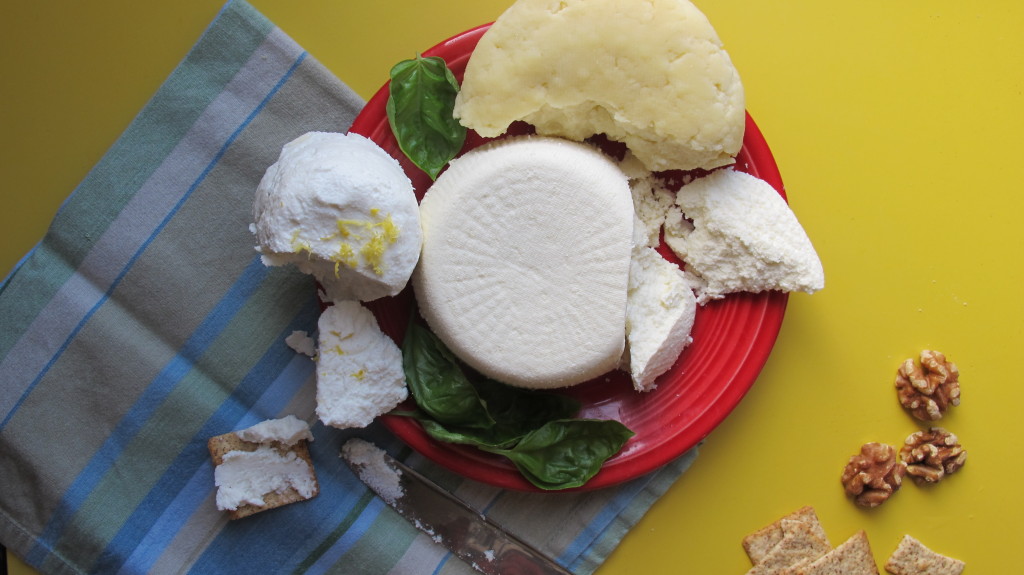 Homemade paneer, queso fresco, and goat cheese.
Homemade paneer, queso fresco, and goat cheese.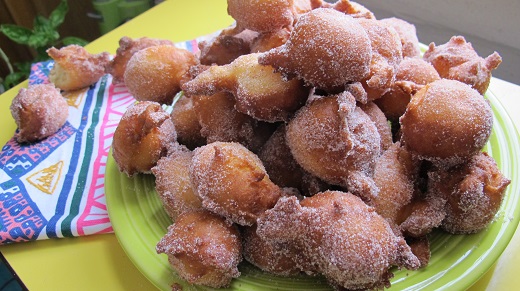 A heaping plate of orange and cinnamon doughnuts.
A heaping plate of orange and cinnamon doughnuts.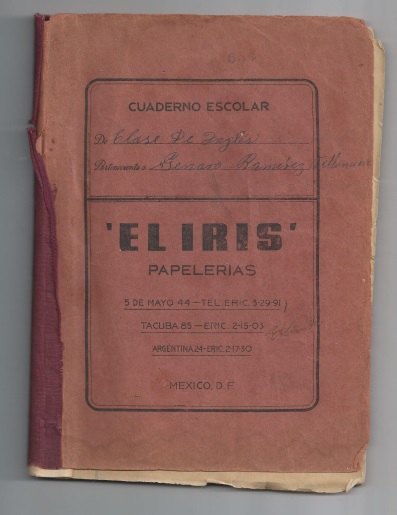 pages were handwritten, in Spanish, which I don’t speak terribly well. But I could recognize the format: lists of ingredients, followed by directions. It was a recipe book, dated 1945.
pages were handwritten, in Spanish, which I don’t speak terribly well. But I could recognize the format: lists of ingredients, followed by directions. It was a recipe book, dated 1945.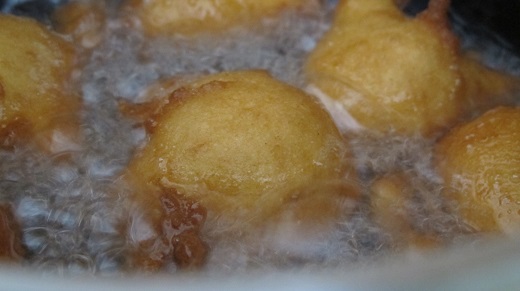 Frying the doughnuts.
Frying the doughnuts.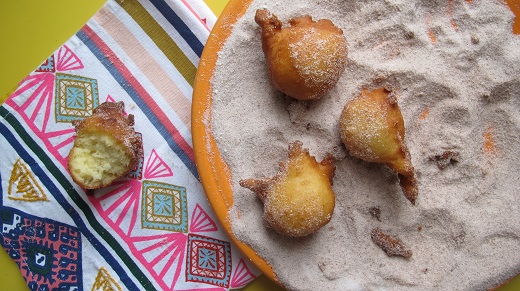 Rolling the doughnuts in cinnamon sugar.
Rolling the doughnuts in cinnamon sugar.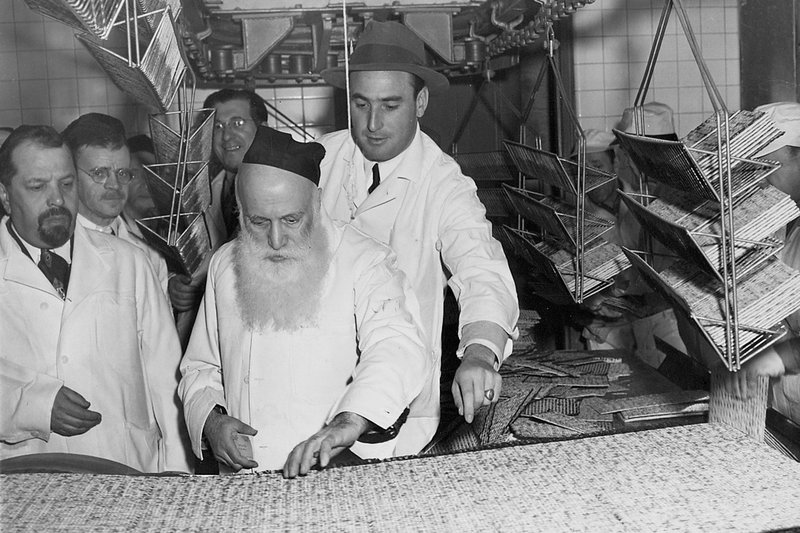
 By Leendertz (Own work) [CC BY-SA 3.0 (http://creativecommons.org/licenses/by-sa/3.0)], via Wikimedia Commons
By Leendertz (Own work) [CC BY-SA 3.0 (http://creativecommons.org/licenses/by-sa/3.0)], via Wikimedia Commons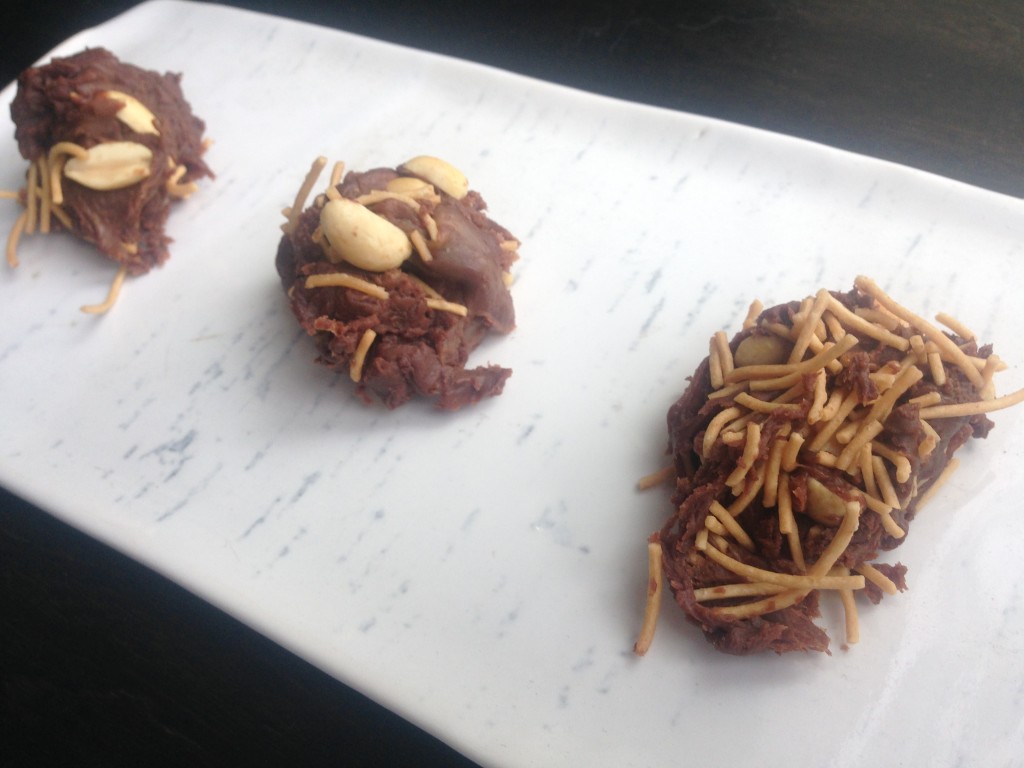 Chinese New Year Cookies…there was nothing I could do to them to make them look less like poops.
Chinese New Year Cookies…there was nothing I could do to them to make them look less like poops.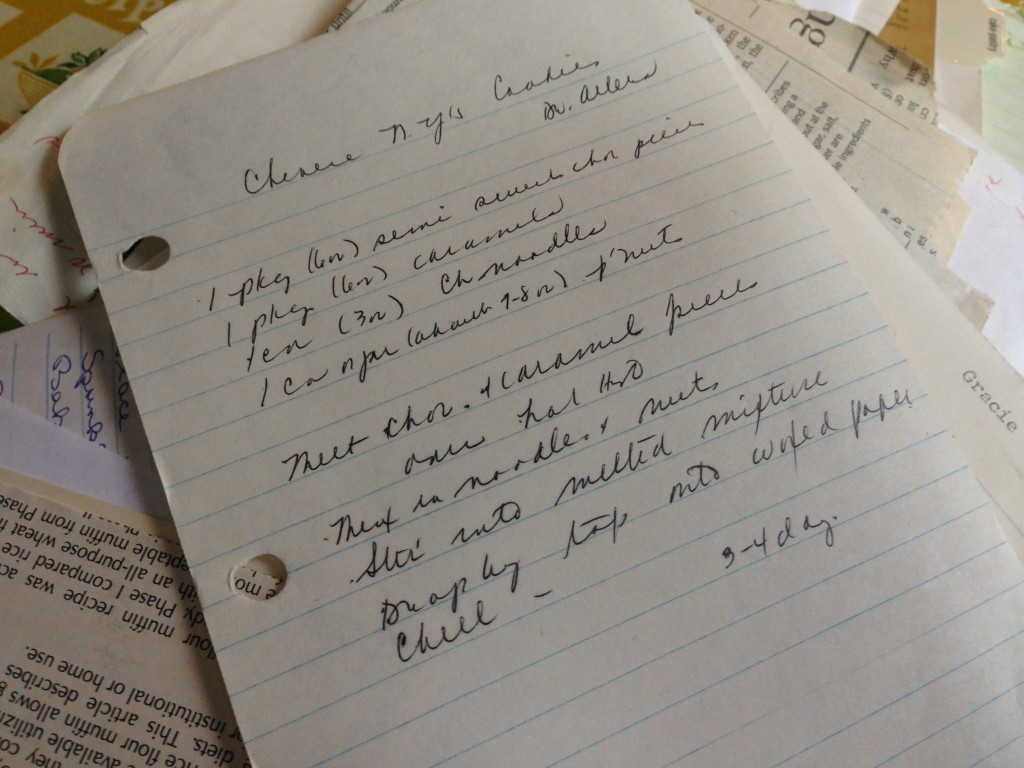
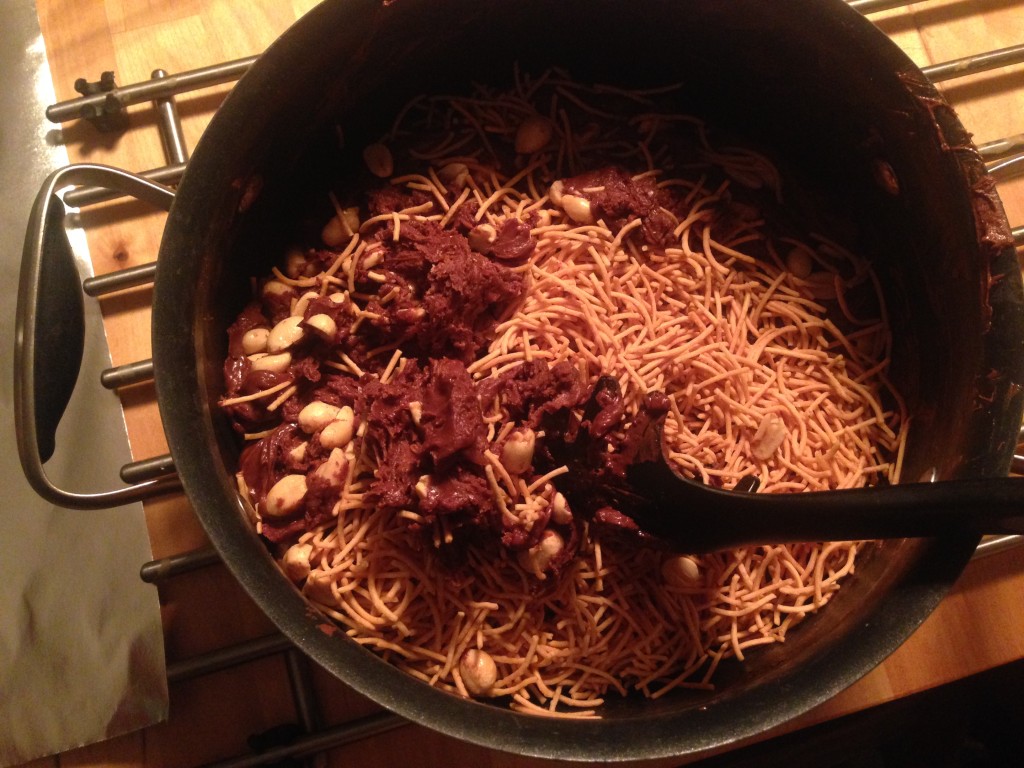 A hot mess from start to finish.
A hot mess from start to finish.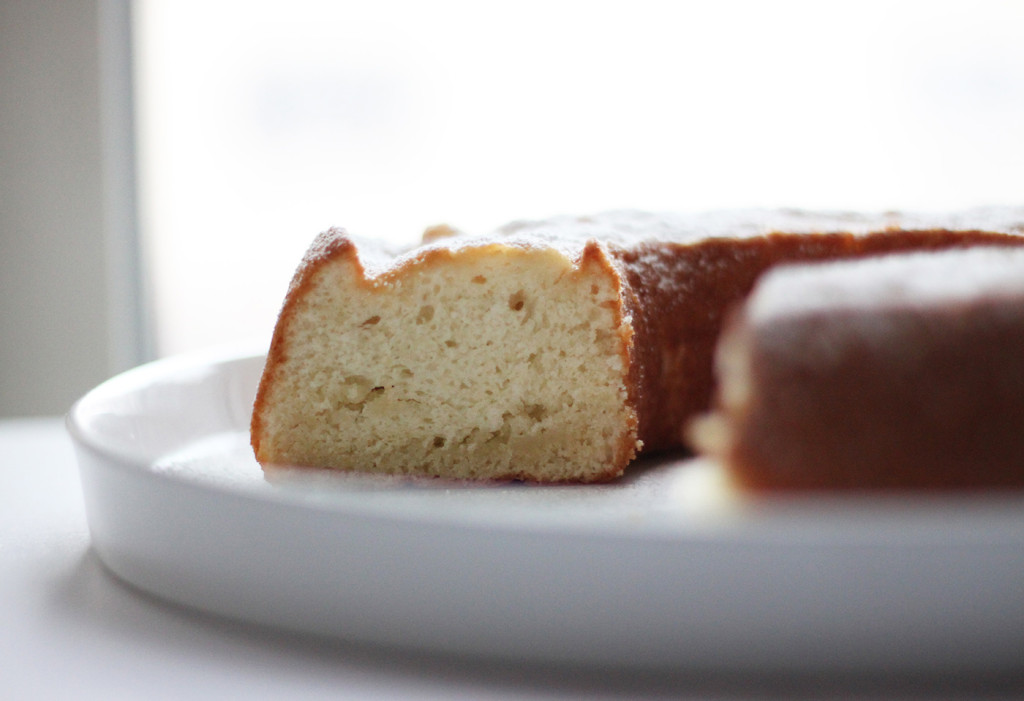
 Moose Milk: A drink for a blizzard.
Moose Milk: A drink for a blizzard. A recipe collection dating from 1966-1998.
A recipe collection dating from 1966-1998. Gale’s fool-proof dessert is C
Gale’s fool-proof dessert is C I included some of my parent’s homemade, dark
I included some of my parent’s homemade, dark  The original recipe for Moosemilk.
The original recipe for Moosemilk. Putting the punch to bed. See the blue circle of the punch bowl on the ground?
Putting the punch to bed. See the blue circle of the punch bowl on the ground? The next morning: Covered in a snow drift!!!
The next morning: Covered in a snow drift!!! Excavating the punch.
Excavating the punch. The final punch!
The final punch!